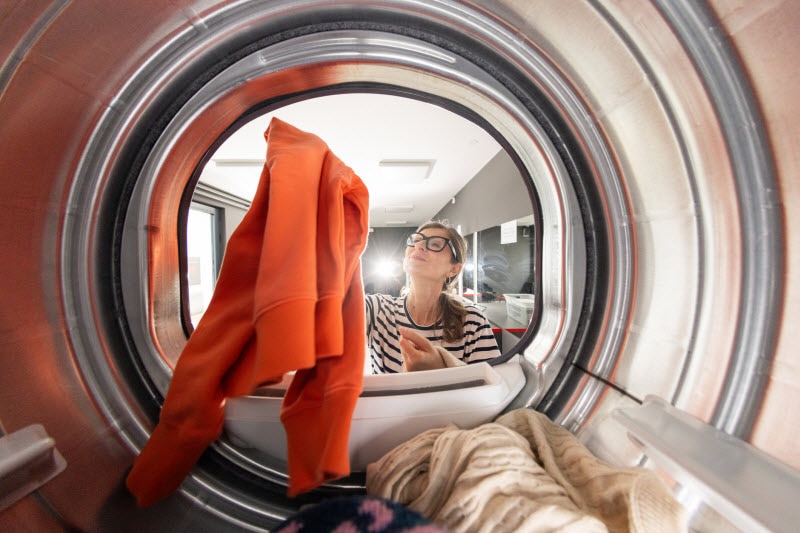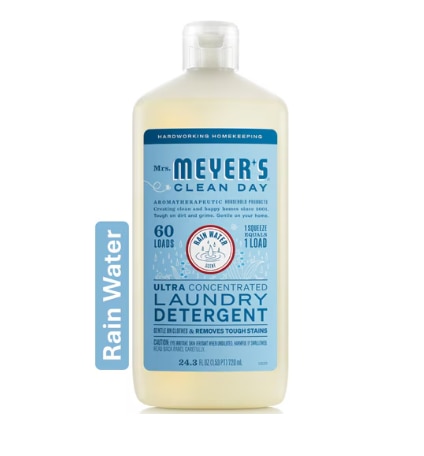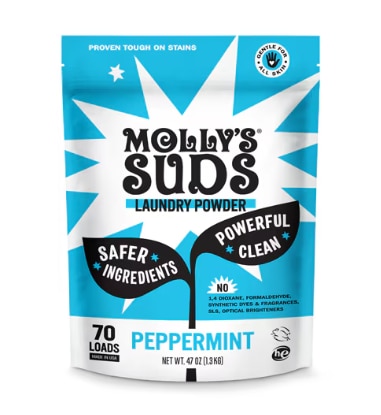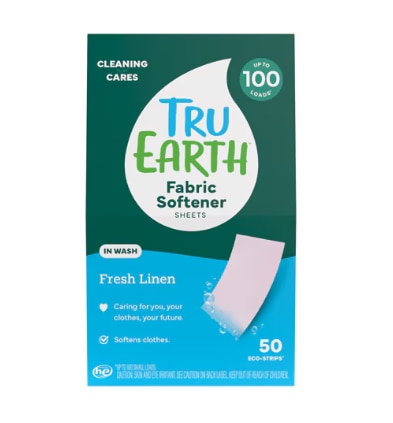You just scored a crisp white shirt or plush set of towels or brand-new sheets. They look pristine—and beg to be used immediately. But before you put them into play, here’s the truth: As counter-intuitive as it seems, “new” doesn’t equate to “clean.” Washing before wear isn’t just for germaphobes.
Why wash new clothes before wearing
Until you know otherwise, most of us assume factory-fresh clothes and linens are safe to put on straight from the store. After all, they look spotless. But when you start digging into the data, the why of it makes a lot of sense. Invisible to the eyes is the cocktail of chemicals, dyes and microbes couch surfing on the fibers of your new threads.
Before any garment reaches your closet, it’s been through textile mills, dye vats, finishing treatments, warehouses, shipping containers, retail racks and if you are shopping in a brick-and-mortar store, countless try-ons. “Brand new” is another way to say “recently arrived from a long, dirty journey.”
Here are the main culprits that lurk in your textiles:
Chemical finishes
Textile finishing is the last step in manufacturing, when fabrics are treated to look smoother, resist wrinkles or keep moths and mildew away. These treatments tend to involve a range of chemicals, including:
- Formaldehyde resins (to resist wrinkles)
- Disperse dyes (common in synthetics like polyester)
- Flame retardants, water repellents or antimicrobial finishes
- Sizing agents or starches to keep fabric crisp during shipping
Dermatologists warn that these additives are among the most common causes of textile contact dermatitis, an itchy, rash-like allergic reaction. Even if you’re not allergic, residues can cause mild irritation, especially in areas where fabric rubs against sweat or friction (waistbands, armpits, undergarments).
Although regulators monitor some chemicals, many slip through due to cracks in oversight. Independent testing has repeatedly found excess levels of allergenic dyes and other substances in clothing, particularly fast-fashion imports. For example, one 2023 study found that many raw materials used in fast‐fashion items contained restricted chemicals.
Microbes and germs
Clothing isn’t sterile. Fabrics can harbor bacteria, fungi and potentially even fecal bacteria picked up from somewhere along the complex supply chain. Retail can compound the issue. Ever tried on jeans in a fitting room? So did the 20 people before you. Those towels and sheets might be handled by staff, customers and warehouse workers.
Washing once at home, prophylactically, dramatically cuts down whatever microbial load comes in from the outside world. Are you going to catch a raging infection from skipping one wash? Almost certainly not. But if you have cuts, eczema or a compromised immune system, or the clothes are meant for a baby, all of whom have extra-sensitive skin, the needle may shift slightly in terms of risk.
Towels and linens in particular
Towels, sheets and washcloths deserve extra scrutiny. They often come replete with sizing agents, dyes, softeners and flame retardants used to make them look plush and appealing in the store. A pre-wash reduces these residues, and the risk of irritated skin, as well as releases loose fibers and lint. Plus, without the chemical coatings, your towels can do a much better job of soaking up water.
Dye transfer and staining
Brand-new clothes—especially dark jeans, bright reds, or richly colored fabrics—tend to carry excess dye from the manufacturing process. If you skip the first wash, that dye can rub off onto your skin, bleed onto furniture or car seats and even stain lighter garments in the same load. A quick wash helps set the color, rinses away loose dye and saves you from finding indigo streaks on your legs (from jeans) or a pink tinge that stains your favorite white tee.
So why not take the pre-wash plunge? In one spin cycle, you rinse away factory chemicals and residues, significantly reduces microbial load, soften stiff fabrics, improve comfort and performance and prevent color transfer or fading later. What seems redundant or even wasteful might be the more prudent choice.
Pre-wash tips for new clothes and linens
Not all fabrics are the same, and neither is the way you should treat them. Become a diligent care label reader and act accordingly.
Wash darks and brights separately
Wash similar colors together. Dark jeans or bright shirts should be washed separately first to avoid unwanted dye transfer. Put like tones with like or wash particularly vibrant items on their own.
Use water temperature strategically
Cold water preserves colors and reduces shrinkage. It’s good for more delicate fabrics as well, and because it’s easier on the environment, is a good default. Hot water works best for white garments, home textiles like sheets and towels (to kill bacteria), laundry contaminated by a sick person, and anything dingy and in need of a refresh.
Choose ideal detergent
Look for a liquid detergent, which often work better liquid detergents often work better than powders for residue removal. Enzyme-containing detergents can help break down finishing agents, but be careful if you have sensitive skin. “Free & Clear” detergents such as Seventh Generation Free & Clear make good choices, as they reduce the risk of contact dermatitis.
Because they don’t have dye or fragrance, which are biggest triggers for allergic and irritant contact dermatitis, they are the safest choice for removing harmful chemicals. Many free-and-clear formulas also avoid the harsher preservatives that sometimes cause rashes. Eco/plant-based detergents with minimal additives such as Molly’s Suds, Biokleen and Ecos also make for excellent, sustainable choices.
When you might skip it
Not everything needs an emergency wash. Outerwear like jackets, pre-washed jeans, or items that don’t touch your skin directly pose lower risks. Some delicate or high-end pieces may even be harmed by premature washing.




